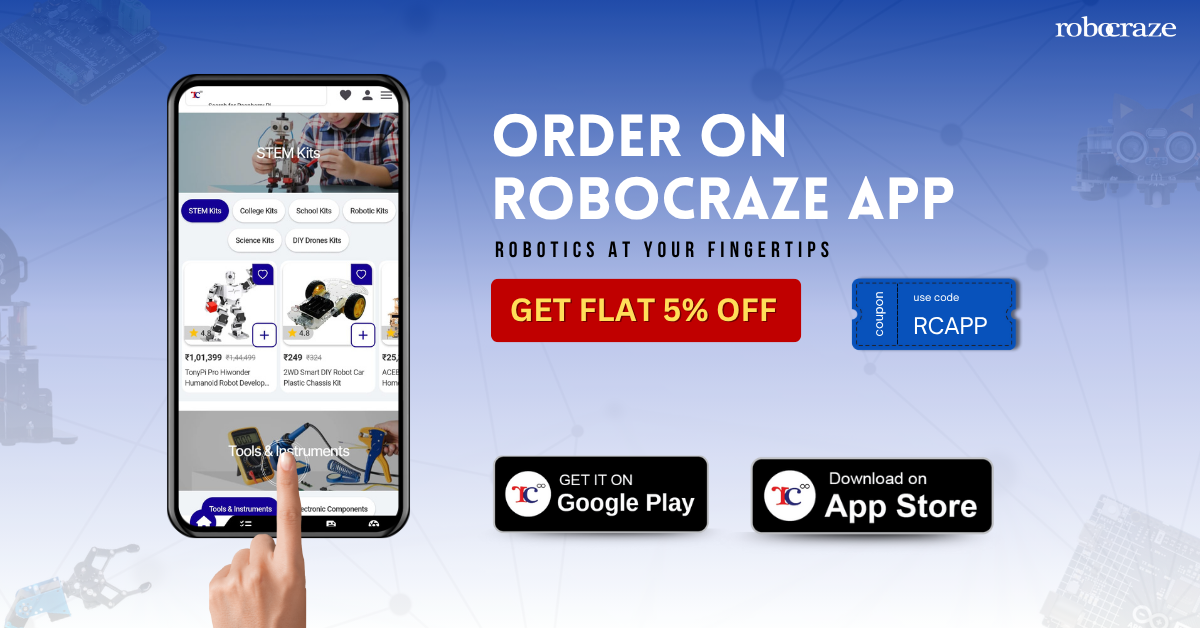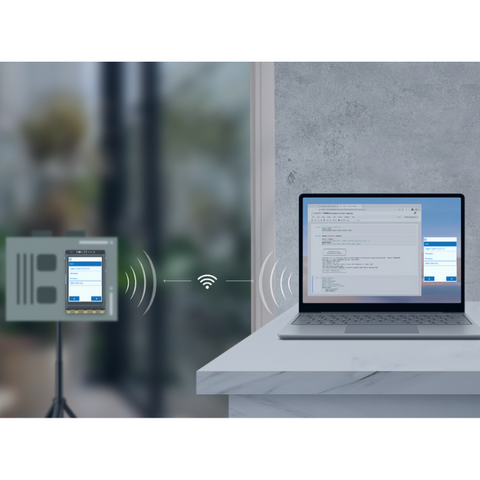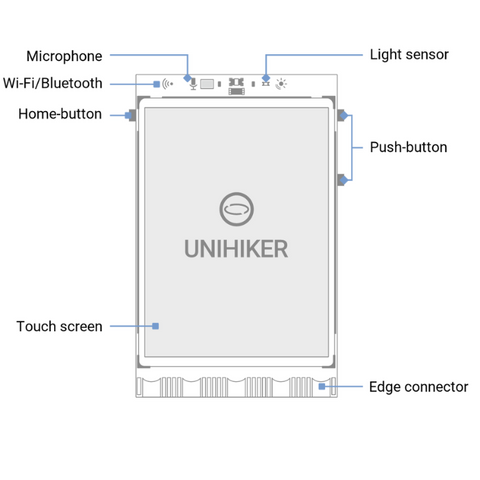3.6/3.7V Dual 18650 Rechargeable Lithium Battery Charger
sim7670c ic is good but it booting is very complication any other metod to connect 4G pius sms read and write
2A Dual L298N Motor Driver Module with PWM Control

UNIHIKER - IoT Python Single Board Computer with Touchscreen
Let us know!
We'll try to match the price for you
Couldn't load pickup availability


UNIHIKER IoT Python Single Board Computer is the ultimate solution for AI, IoT, and STEM enthusiasts. This Debian-based Linux SBC boasts a Quad-Core ARM Cortex A35, RISC-V MCU, built-in Jupyter Notebook, and a 2.8-inch touchscreen. Made with precision in mind, UNIHIKER ensures the highest quality and durability.
Its innovative technology and design provide a unique selling point, making it ideal for a variety of applications. The use of quality materials guarantees benefits such as real-time web data access and high expandability, making it suitable for ideal conditions. UNIHIKER is not just a development board; it's an invitation to a new era of learning, coding, and creating.
1. It comes with a built-in 2.8-inch colorful touchscreen.







| CPU | Quad-Core ARM Cortex-A35, up to 1.2GHz |
| RAM | 512MB |
| Flash | 16GB |
| Operating System | Debian |
| Wireless Connectivity | Wi-Fi: 2.4G, Bluetooth 4.0 |
| Screen | 2.8-inch, 240×320, Touch Screen |
| MCU | GD32VF103 |
| Sensors | Button, Microphone, Light Sensor, Accelerometer, Gyroscope |
| Actuators | LED, Buzzer |
| Ports | USB Type-C, USB-A, Gravity 3pin&4pin port, Edge connector |
| Power | 5V 2A for USB Type-C |
| Size | 51.6mm x 83mm x 13mm |
A Single-Board Computer (SBC) is like a whole computer packed onto one small board. It has all the components it needs to function, including memory, input/output, and the brain (microprocessor), all in one location. Typically, it doesn't have additional slots for adding items. Because it requires fewer circuit boards, connectors, and driving circuits, which lowers the expenses. These computers are employed in a wide range of sectors, as well as in the military, homes, cars, and hospitals..
SBCs are vital in business applications like security and surveillance, offering cost-effective solutions for basic servers and machinery control. In industrial settings, they excel as embedded controllers, managing tasks like process control and robotics. SBCs are crucial for industrial IoT, facilitating communication and data analysis to enhance production efficiency. With high performance, they handle complex tasks like edge computing and image recognition efficiently, outperforming traditional PLCs in data processing. Integrating SBCs with PLCs creates comprehensive automated systems capable of control, computation, and data analysis.
PLCs, or programmable logic controllers, are specialized hardware, programming languages, and integrated support for industrial communication protocols that are used to control industrial processes. Single board computers, or SBCs, are multipurpose computers on a single circuit board that have specific control features. SBCs are less expensive but demand more work for control applications, whereas PLCs are more expensive but designed for dependability and real-time control.
Choosing between SBCs (Single Board Computers) and AACs (All-in-One Controllers) depends on your specific needs:
i) SBCs offer flexibility and versatility, running various operating systems and supporting multiple programming languages.
ii) AACs are purpose-built for industrial control, with specialized features like rugged hardware and built-in support for industrial protocols.
iii) SBCs may require more effort to configure for control tasks, while AACs are easier to set up but may have a higher upfront cost.
iv) Consider SBCs for diverse applications and AACs for streamlined industrial control needs.
Raspberry Pi, Arduino, Beagle Bone, Intel NUC, NVIDIA Jetson, Unihiker, and ARM-based SBCs are the different types of SBCs in embedded systems. The choice of SBC is influenced by various aspects, such as processing power, I/O requirements, cost considerations, and compatibility with current hardware and software ecosystems.
This product comes with a 1-year manufacturer warranty from the date of purchase, covering manufacturing defects only.
The product shows signs of physical damage, mishandling, exposure to water/moisture, fire, natural calamities, unauthorized repairs, improper storage near heat or direct sunlight, or alteration in any way.